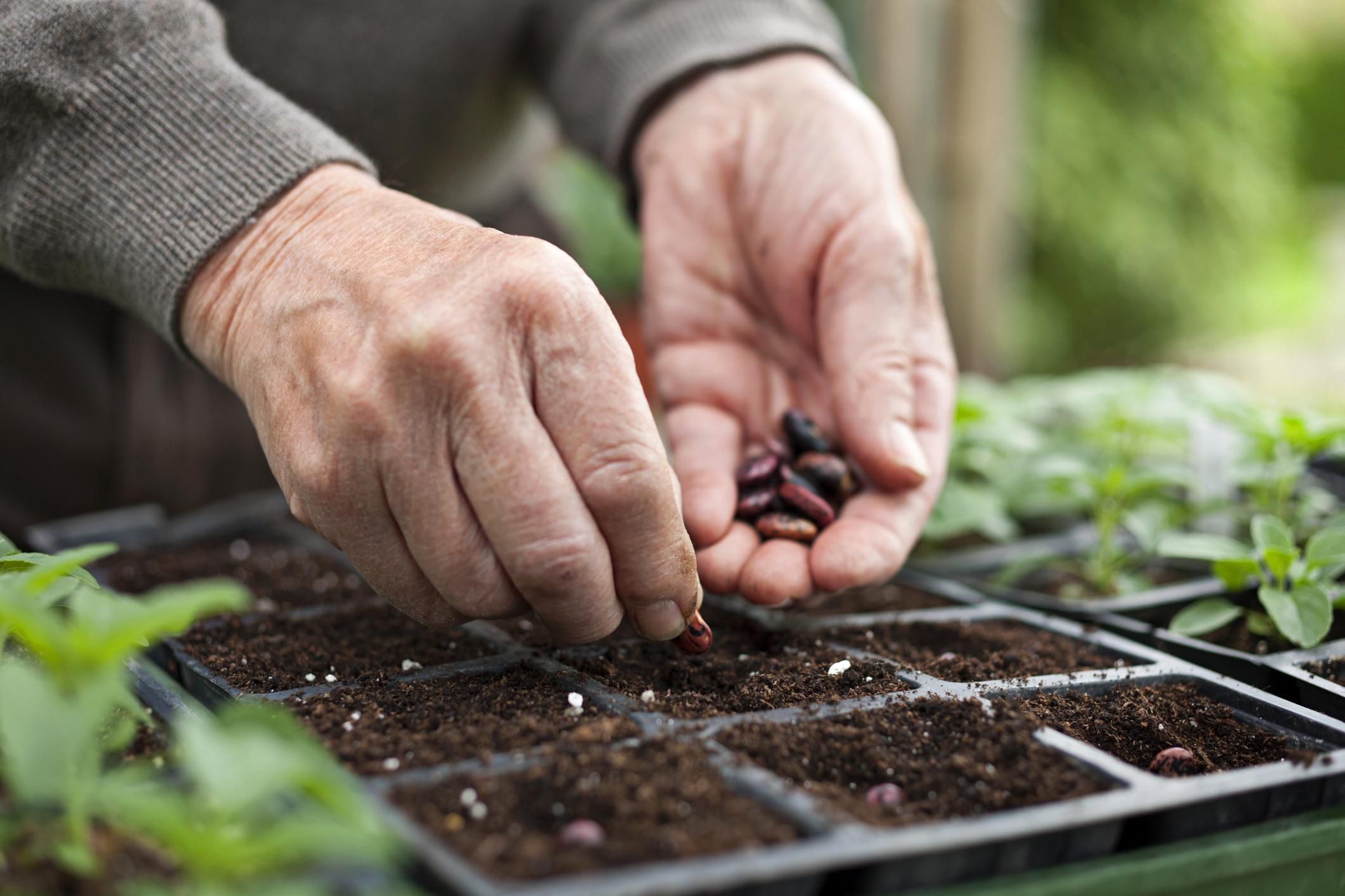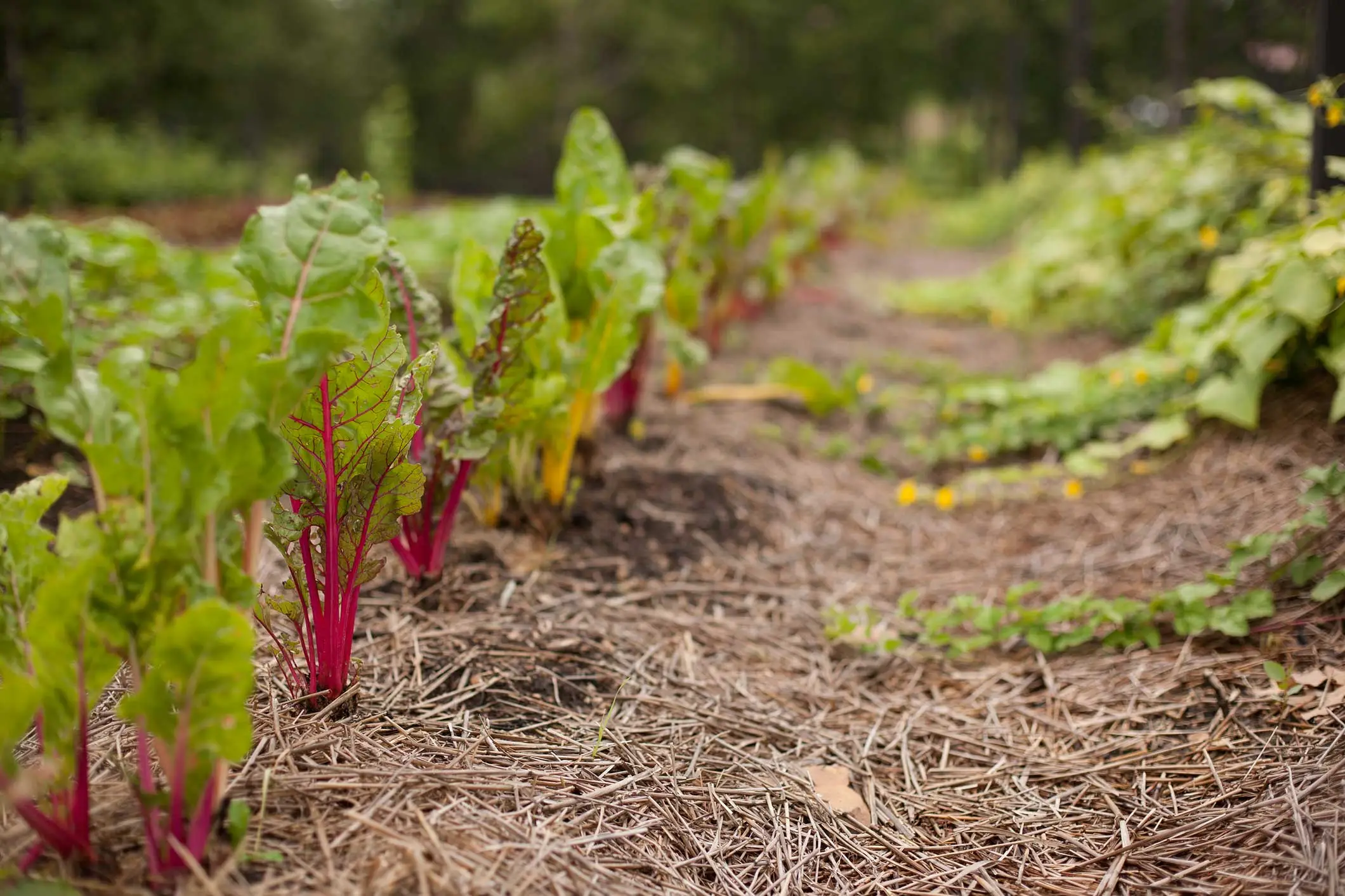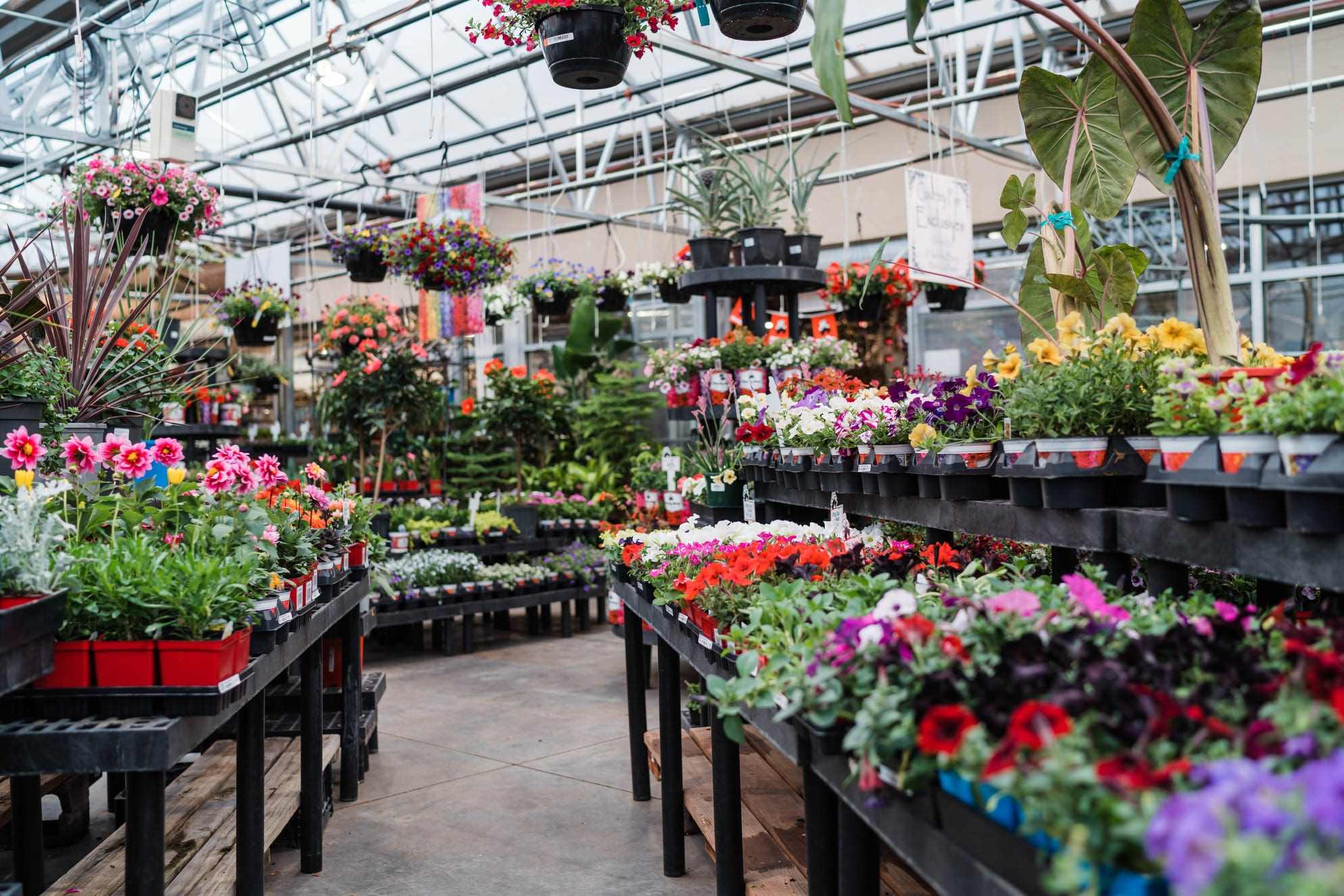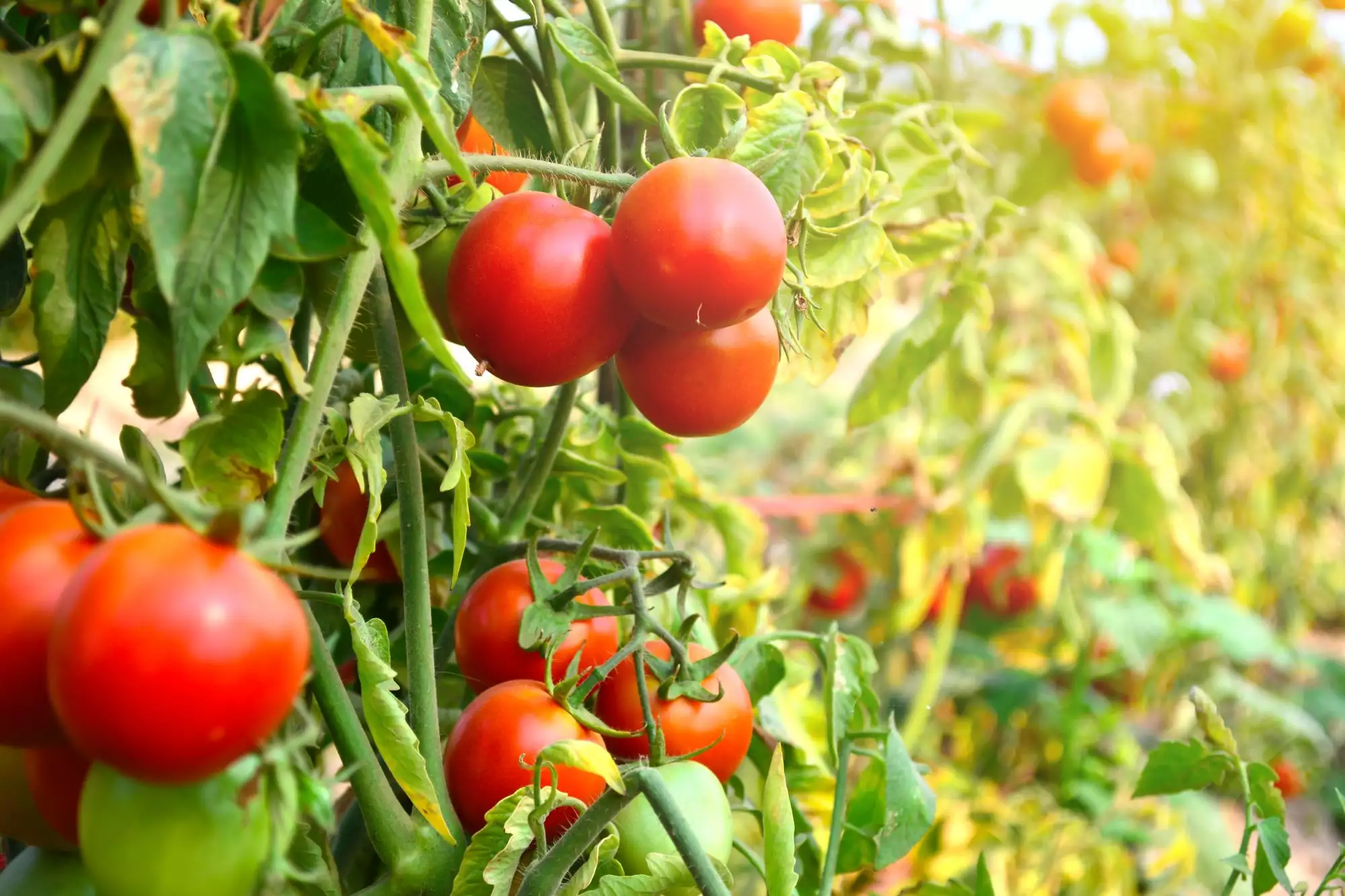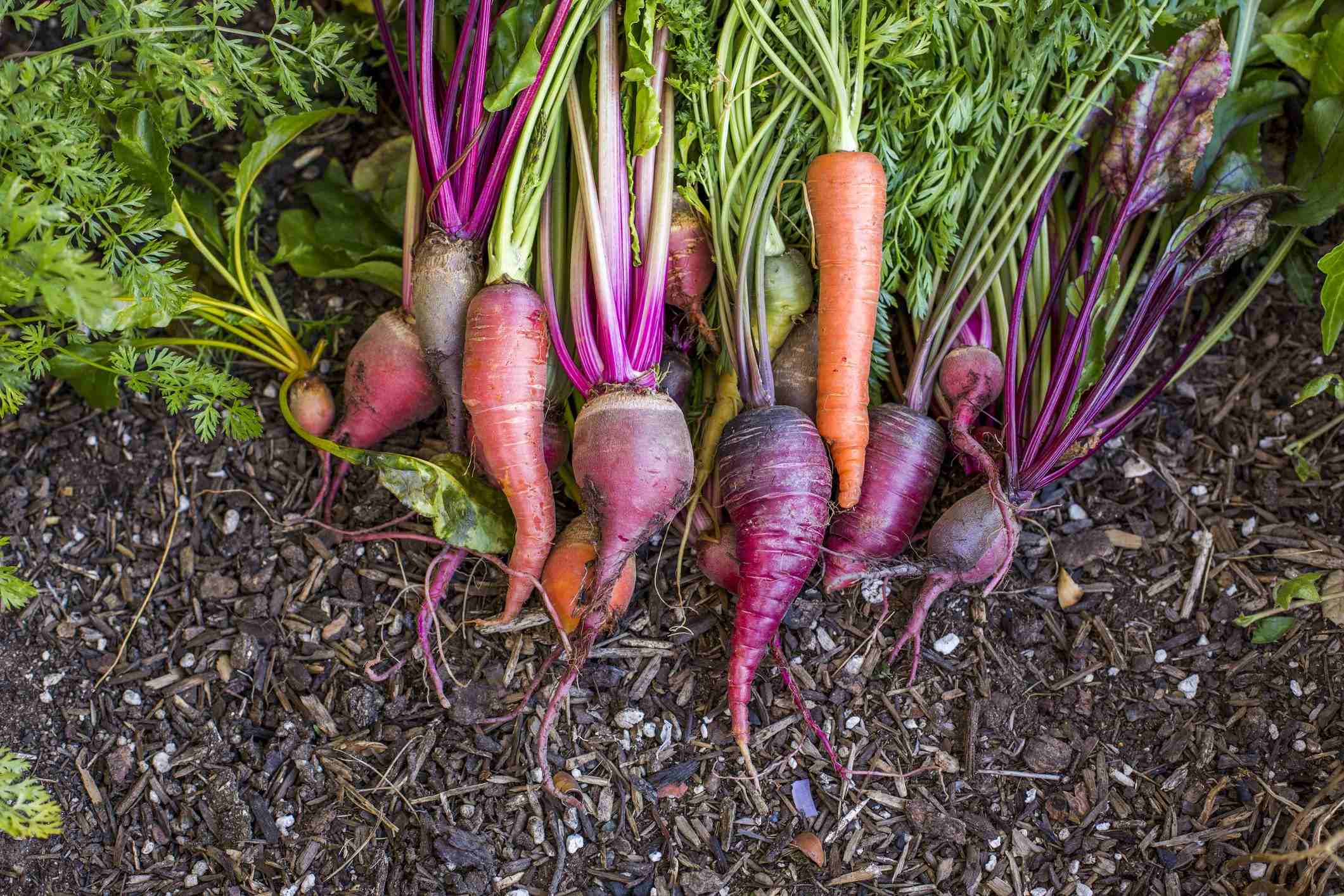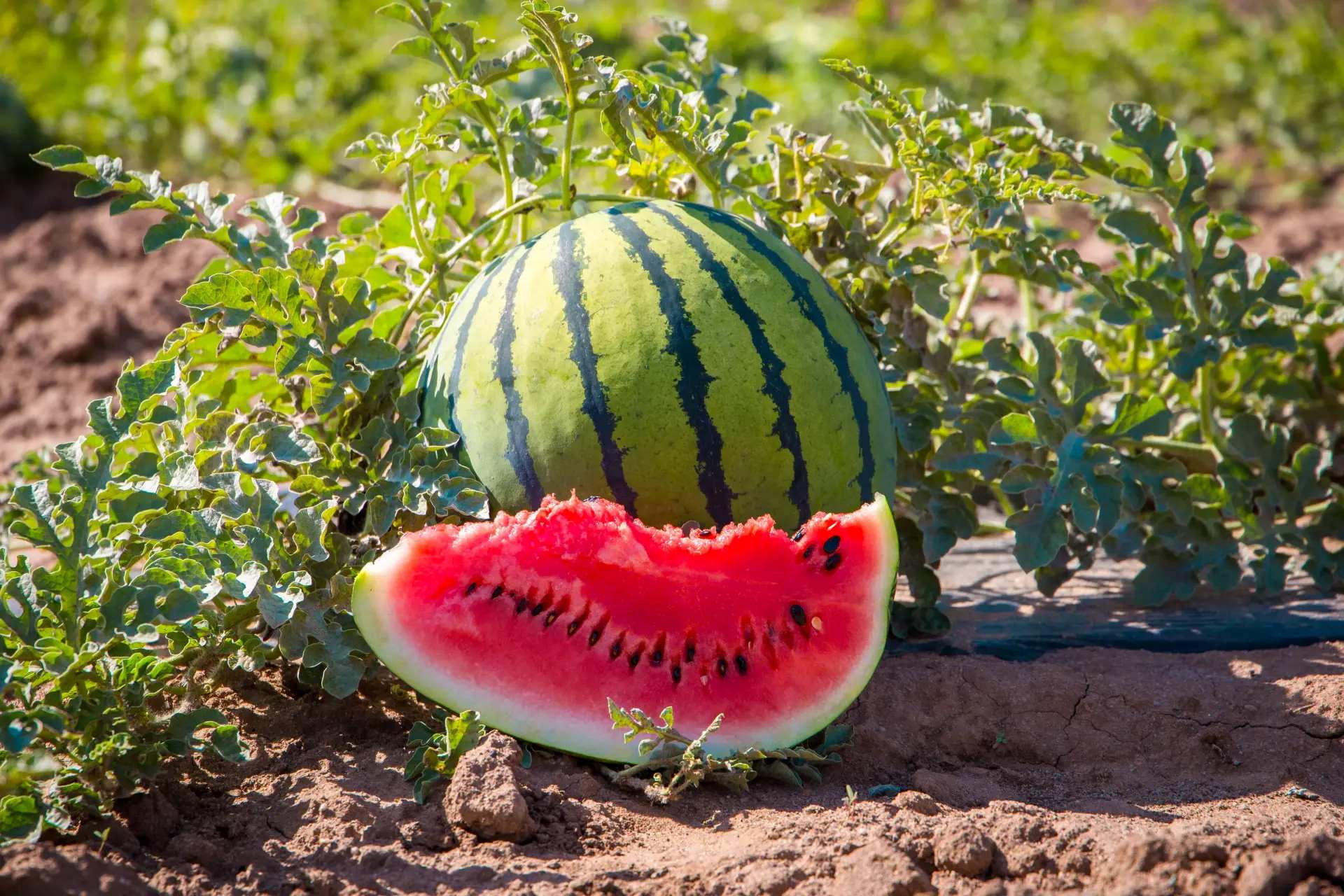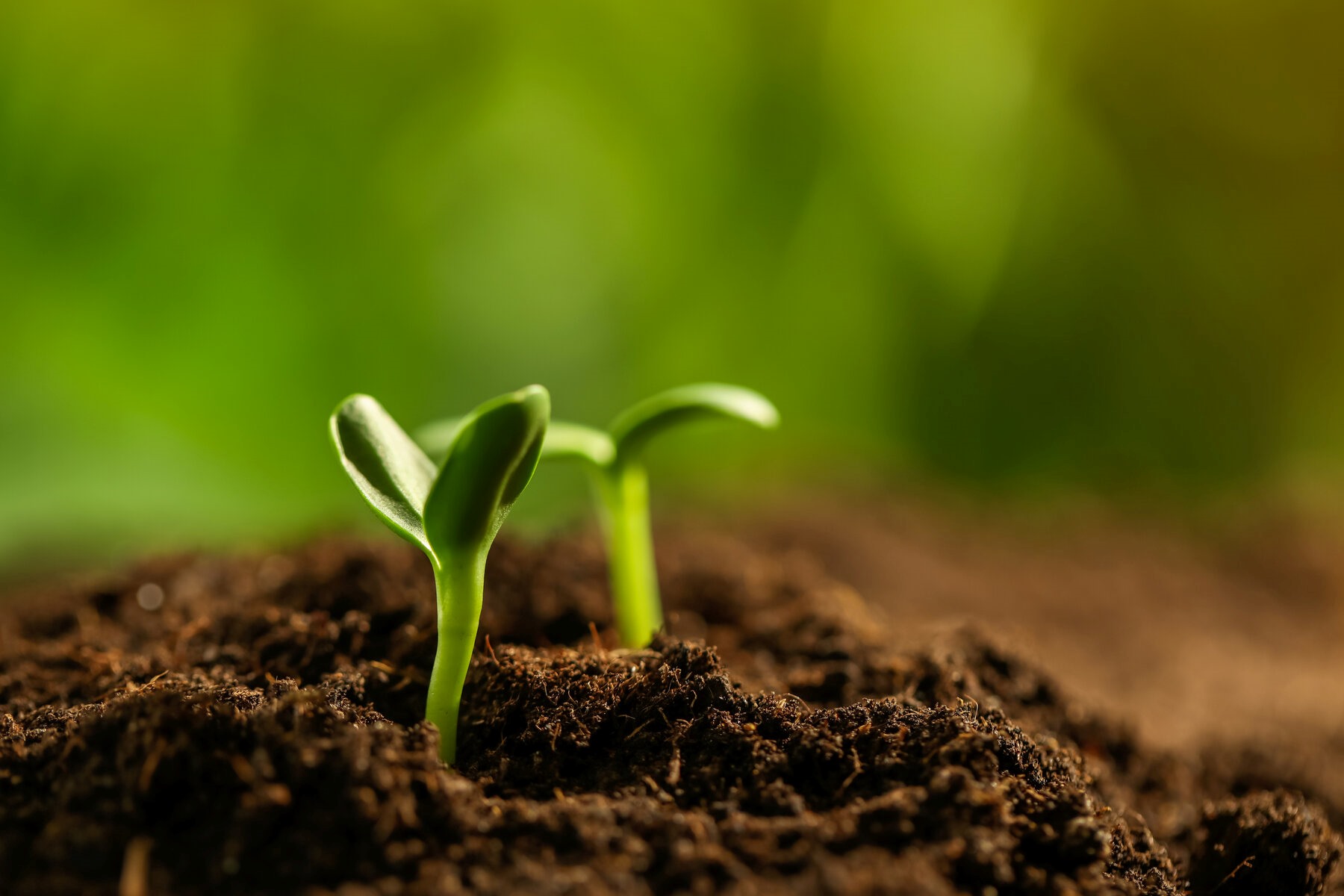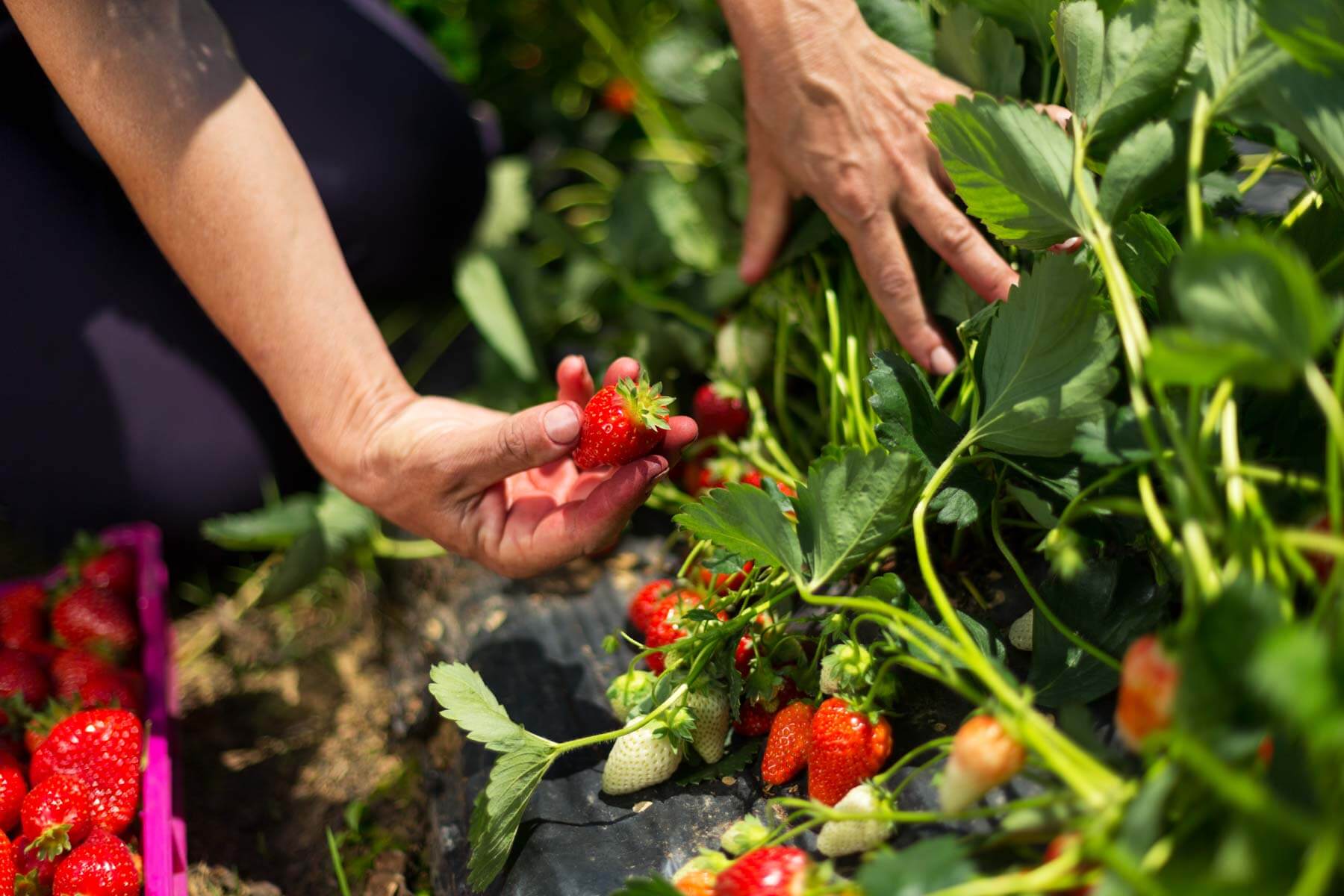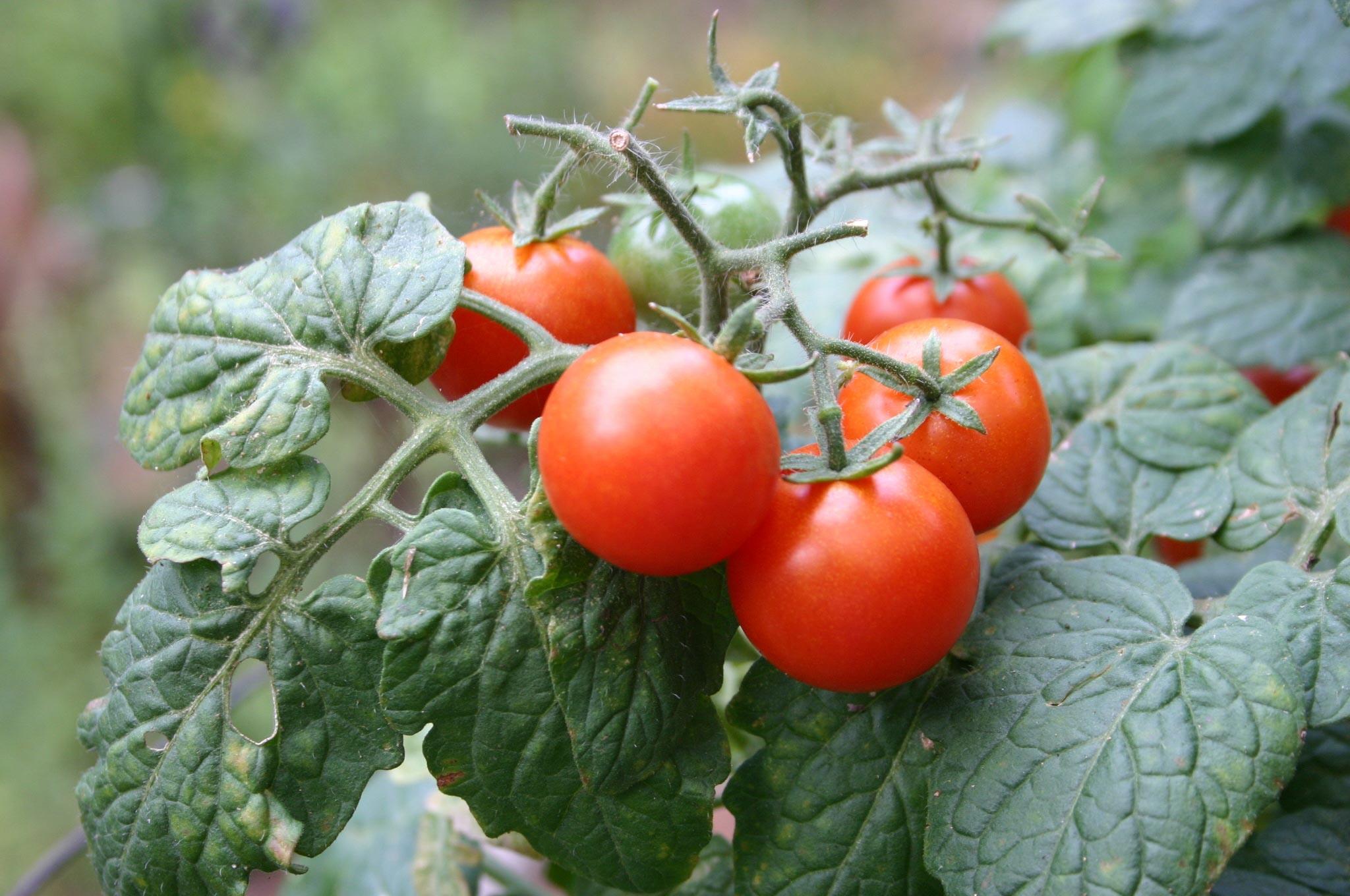Home>Gardening Techniques>Seasonal Gardening>When To Start Planting Peppers
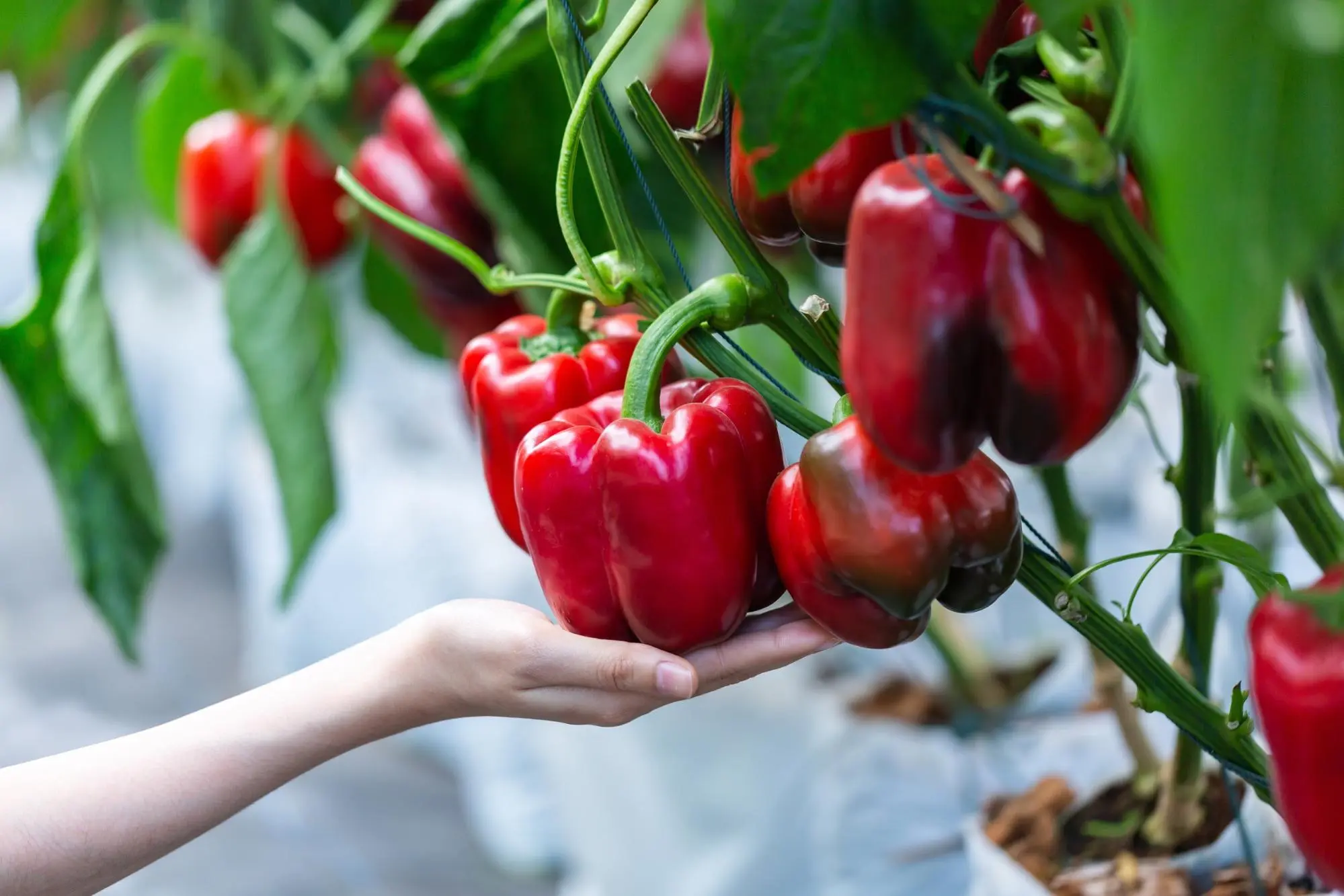

Seasonal Gardening
When To Start Planting Peppers
Modified: January 22, 2024
Discover the ideal time to start planting peppers and other seasonal gardening tips. Improve your garden yield with proper timing and expertise.
(Many of the links in this article redirect to a specific reviewed product. Your purchase of these products through affiliate links helps to generate commission for Chicagolandgardening.com, at no extra cost. Learn more)
Table of Contents
- Introduction
- Factors to Consider Before Planting Peppers
- Optimal Time to Plant Peppers
- Temperature Requirements for Planting Peppers
- Soil Requirements for Planting Peppers
- Selecting the Right Pepper Varieties to Plant
- Preparing the Planting Area
- Planting Techniques for Peppers
- Watering and Fertilizing Peppers
- Protecting Peppers from Pests and Diseases
- Harvesting Peppers
- Conclusion
Introduction
Welcome to the world of seasonal gardening, where you can take delight in growing your own vegetables and enjoy the bountiful rewards of your efforts. One such vegetable that adds a burst of flavor to our dishes is the humble pepper. Whether you prefer the mild sweetness of bell peppers or the fiery heat of chili peppers, planting peppers can be a rewarding experience for any gardener.
Before diving into the exciting world of pepper cultivation, it is important to understand the factors that come into play when deciding the ideal time to plant peppers. From temperature considerations to soil preparation, each step plays a crucial role in ensuring the success of your pepper plants. In this article, we will explore the optimal time for planting peppers, along with the necessary steps to take for a healthy and fruitful harvest.
Peppers belong to the Solanaceae family, which includes tomatoes, potatoes, and eggplants. They thrive in warm climates, making them an ideal addition to a seasonal garden. However, it is essential to choose the right time for planting peppers, as they are sensitive to cold weather conditions.
By understanding the factors that influence pepper plant growth and following the best practices, you can achieve a bountiful harvest of peppers to enjoy throughout the season. So let’s dive in and explore the world of seasonal gardening and discover when to start planting your beloved peppers.
Factors to Consider Before Planting Peppers
Before you start planting peppers in your seasonal garden, there are several important factors to consider. By taking these factors into account, you can ensure optimal conditions for your pepper plants and increase the chances of a successful harvest.
The first factor to consider is sunlight. Peppers require full sun exposure to thrive. Therefore, choose a planting location that receives at least 6-8 hours of direct sunlight each day. This will help promote healthy growth and ensure that your peppers receive the necessary amount of light to develop their flavors.
Next, it is essential to evaluate the soil quality. Peppers prefer well-draining soil that is rich in organic matter. Amend the soil with compost or well-rotted manure to improve its fertility and drainage. Additionally, ensure that the soil pH is between 6.0 and 7.0, as peppers prefer slightly acidic to neutral soil conditions.
Another factor to consider is the temperature. Peppers are warm-season vegetables and thrive in temperatures between 70°F and 85°F (21°C – 29°C). It is crucial to wait until the soil temperature reaches at least 60°F (15°C) before planting peppers. Planting peppers too early in cool soil can stunt their growth and make them more susceptible to diseases.
Watering is also an important consideration. While peppers require regular watering, it is crucial not to overwater them. Ensure that the soil is evenly moist, but not waterlogged. Overwatering can lead to root rot and other fungal diseases. Consider using a drip irrigation system or watering at the base of the plants to avoid wetting the foliage excessively.
Lastly, it is crucial to consider the spacing requirements of pepper plants. Give each pepper plant enough space to grow and spread its branches. Planting peppers too closely together can result in overcrowding, hinder air circulation, and increase the risk of disease. Follow the recommended spacing guidelines provided by the seed packet or plant nursery.
By considering these factors before planting peppers, you can create a favorable environment for your plants and set the stage for a productive and rewarding pepper growing season.
Optimal Time to Plant Peppers
Choosing the right time to plant peppers is crucial for their successful growth and development. Since peppers are warm-season vegetables, it is essential to wait for the threat of frost to pass before planting them outdoors.
The optimal time to plant peppers varies depending on your location and the local climate. Generally, it is best to wait until the soil temperature has warmed up to at least 60°F (15°C) before transplanting pepper seedlings or sowing seeds directly into the ground. Planting peppers too early in cold soil can result in stunted growth and poor plant establishment.
In most regions, the recommended time to plant peppers is after the last frost date in late spring or early summer. However, if you live in a cooler climate, you may need to wait until the soil and air temperatures consistently reach the desired range for pepper growth.
It is worth noting that peppers take longer to mature compared to other warm-season vegetables such as tomatoes or cucumbers. Depending on the variety, peppers can take anywhere from 60 to 90 days from transplanting to harvest. Taking this into account, it is important to plan your planting schedule accordingly, especially if you have a short growing season.
If you are starting peppers from seeds indoors, you can gain a head start by sowing them a few weeks before the last frost date. This allows the seedlings to develop and become strong before transplanting them into the garden. Be sure to provide them with sufficient light and keep the temperature around 70°F (21°C) for optimal germination and growth.
Overall, the optimal time to plant peppers is when the soil temperatures have warmed up, and the danger of frost has passed. By waiting for the right conditions and following recommended guidelines, you increase the chances of healthy plant growth, abundant fruit production, and a successful pepper harvest.
Temperature Requirements for Planting Peppers
Temperature is a critical factor to consider when planting peppers. Being a warm-season vegetable, peppers have specific temperature requirements for optimal growth and fruit production.
Peppers thrive in temperatures between 70°F and 85°F (21°C – 29°C). They need warm weather to germinate, establish, and develop into healthy plants. Therefore, it is crucial to wait until both the air and soil temperatures have sufficiently warmed up before planting peppers.
Planting peppers too early in cold soil or cool temperatures can lead to stunted growth and poor performance. The ideal soil temperature for planting peppers is at least 60°F (15°C), as they are sensitive to low temperatures and can suffer from transplant shock if exposed to chilly conditions.
It is important to note that peppers are more susceptible to cold temperatures compared to other warm-season vegetables such as tomatoes or cucumbers. Therefore, if you live in a region with a short growing season or cool climate, it is advisable to start your pepper plants indoors, several weeks before the last frost date.
When starting pepper seeds indoors, provide them with a warm and bright environment. A consistent temperature of around 70°F (21°C) encourages optimum germination and healthy seedling growth. Consider using a heating mat or placing the seed trays near a heat source to maintain the desired temperature.
Once the seedlings have developed and the danger of frost has passed, you can transplant them into the garden when the soil temperatures have warmed up to the ideal range. This usually occurs a few weeks after the last frost date and when the daytime temperatures consistently reach the desired level.
While peppers thrive in warm temperatures, it is important to note that excessively high temperatures can also impact their growth. Extended periods of extreme heat, especially above 90°F (32°C), can cause stress to the plants, leading to flower drop and reduced fruit set.
In regions where temperatures regularly exceed 90°F (32°C), provide shade or use shade cloth to protect the plants from intense sunlight and heat stress. Additionally, ensure proper irrigation during hot weather to prevent the soil from drying out, as peppers require consistent moisture for healthy growth.
By understanding and meeting the temperature requirements for planting peppers, you can provide your plants with the ideal conditions for growth, resulting in robust plants and a bountiful harvest of delicious peppers.
Soil Requirements for Planting Peppers
Creating the right soil environment for your pepper plants is essential for their overall health and productivity. Peppers thrive in well-draining soil that is rich in organic matter and provides the necessary nutrients for optimal growth.
When preparing the soil for planting peppers, it is important to ensure good drainage. Peppers do not tolerate waterlogged soil, as it can lead to root rot and other diseases. To improve drainage, amend the soil with compost or well-rotted manure, which will also increase its fertility and provide essential nutrients.
Peppers prefer slightly acidic to neutral soil with a pH between 6.0 and 7.0. If your soil is too alkaline, you can lower the pH by adding elemental sulfur or acidic organic matter like pine needles or peat moss. On the other hand, if your soil is too acidic, you can raise the pH by adding agricultural lime.
Testing the soil before planting peppers can provide valuable insights into its nutrient levels and pH. You can use a soil testing kit or send a sample to a local agricultural extension service for analysis. Based on the results, you can make any necessary amendments to ensure the soil is ideal for pepper plant growth.
In addition to good drainage and proper pH levels, peppers benefit from soil that is rich in organic matter. Organic matter improves soil structure, retains moisture, and provides essential nutrients. Incorporating compost, well-rotted manure, or other organic materials into the soil prior to planting peppers can enhance its fertility and support healthy plant growth.
When planting peppers, space them adequately to allow for proper root development and air circulation. Planting peppers too closely together can lead to overcrowding, hinder growth, and increase the risk of disease. Follow the recommended spacing guidelines provided by the seed packet or plant nursery.
Proper soil preparation is essential for successful pepper cultivation. By ensuring good drainage, adjusting the pH if necessary, and incorporating organic matter, you can create an ideal soil environment that promotes vigorous growth, abundant fruit production, and healthier pepper plants overall.
Selecting the Right Pepper Varieties to Plant
When it comes to planting peppers, choosing the right varieties is crucial for a successful and enjoyable gardening experience. With a wide range of pepper types available, each offering its own unique flavor and heat level, selecting the right varieties will ensure you harvest peppers that suit your taste preferences and culinary needs.
Before making your selection, consider the following factors:
Heat Level: One of the distinguishing characteristics of peppers is their heat level. From mild and sweet bell peppers to fiery hot chili peppers, the Scoville scale is used to measure the heat intensity. Assess your heat tolerance and choose varieties accordingly. Popular mild varieties include ‘Sweet Banana’ and ‘Bull’s Horn,’ while those seeking more heat can opt for ‘Cayenne’ or ‘Habanero’ peppers.
Color and Shape: Peppers come in a range of colors, including green, yellow, orange, red, and even purple. Each color indicates a different stage of ripeness and offers a unique flavor profile. Consider the appearance and size of the peppers you prefer, whether you prefer long slender ones like ‘Jalapeno’ or blocky bell pepper varieties.
Use and Culinary Purposes: Determine the purpose you have in mind for your peppers. Will you primarily use them fresh in salads and stir-fries? Are you looking to pickle or preserve them? Some peppers, like ‘Poblano’ or ‘Anaheim’ peppers, are great for stuffing and roasting, while others like ‘Cayenne’ or ‘Thai Bird’s Eye’ peppers are perfect for adding heat to dishes.
Growing Conditions: Consider the specific growing conditions in your garden, such as the amount of sunlight, temperature, and time available. Some pepper varieties may be more suitable for shorter growing seasons or cooler climates, while others thrive in hotter and more extended growing seasons.
Disease Resistance: If you have experienced specific pest or disease problems in the past, look for pepper varieties that are known for their resistance to those issues. Disease-resistant varieties can help minimize the risk of plant damage and ensure a more successful harvest.
Local Recommendations: Seek recommendations from local nurseries, fellow gardeners, or agricultural extension services in your area. They can provide valuable insights into varieties that perform well in your specific region and climate.
Ultimately, selecting the right pepper varieties should be based on your personal preferences and the specific requirements of your garden. By considering factors such as heat level, color, culinary purposes, growing conditions, disease resistance, and local recommendations, you can choose the perfect pepper varieties that will delight your taste buds and ensure a successful pepper-growing season.
Preparing the Planting Area
Preparing the planting area is a vital step in ensuring the success of your pepper plants. By properly preparing the soil and creating an optimal environment, you can provide your peppers with the best conditions for growth and productivity.
The first step is to clear the planting area of any weeds, rocks, or debris. Weeds can compete with peppers for nutrients and water, hindering their growth. Remove any large rocks or hard clumps of soil that may impede root development.
Once the area is cleared, loosen the soil using a garden fork or tiller. This will improve soil aeration and ensure that the roots can penetrate the soil easily. Avoid working the soil when it is excessively wet, as this can lead to compaction and poor drainage.
Next, incorporate organic matter into the soil to enhance its fertility and structure. This can be done by adding compost, well-rotted manure, or other organic materials. Spread a layer of organic matter evenly over the planting area and mix it into the soil to a depth of at least 6-8 inches (15-20 cm).
Once the organic matter is incorporated, it is a good idea to perform a soil test to determine the nutrient composition and pH level of the soil. This will help you identify any deficiencies and allow you to make any necessary adjustments before planting. Follow the recommendations provided by the soil test results to amend the soil with the appropriate fertilizers or soil amendments.
After amending the soil, rake the area smooth, removing any large clumps or rocks. This will create a level surface for planting and ensure uniform soil contact for the roots.
Lastly, consider adding a layer of mulch around the base of the pepper plants once they are planted. Mulching helps conserve moisture, suppress weed growth, and regulate soil temperature. Organic mulches like straw, hay, or wood chips are recommended. Apply a layer of mulch about 2-3 inches (5-8 cm) thick, making sure to keep it away from the base of the plants to prevent rotting.
By taking the time to properly prepare the planting area, you provide your pepper plants with a favorable environment for growth. The incorporation of organic matter, soil amendments, and mulch helps improve soil fertility, drainage, and moisture retention. These efforts contribute to healthy root development and ultimately lead to a successful and thriving pepper garden.
Planting Techniques for Peppers
Proper planting techniques are essential for ensuring the successful establishment and growth of your pepper plants. By following the right methods, you can optimize the conditions for root development and give your peppers the best start possible.
Here are some key planting techniques to keep in mind:
Transplanting Seedlings: If you are starting pepper plants from seeds indoors, it is important to give them a head start by transplanting them into the garden at the appropriate time. Harden off the seedlings by gradually exposing them to outdoor conditions for a week before transplanting. Dig a hole slightly larger than the root ball and gently place the seedling, ensuring that the soil is at the same level as it was in the container. Backfill the hole with soil and gently firm it around the plant.
Spacing: Proper spacing is crucial for pepper plants to develop fully. Give each pepper plant enough space to grow and spread its branches. A general guideline is to space the plants 18-24 inches (45-60 cm) apart in rows that are 24-36 inches (60-90 cm) apart. This allows for good air circulation and prevents overcrowding.
Planting Depth: Plant peppers at the same depth they were growing in their initial containers. Burying the stem too deep can inhibit growth, while planting too shallow may result in unstable plants. The soil should cover the root ball, and the first set of true leaves should be above the soil surface.
Supporting Stakes or Cages: Some pepper varieties, particularly those with large fruits, may require support as they grow to prevent the plants from becoming top-heavy and the branches from breaking. Insert stakes or place cages around the young plants, using materials such as bamboo or metal. Tie the plants gently to the support as they grow to provide stability.
Watering: After planting, water the pepper plants thoroughly to help with root establishment. Provide enough water to moisten the root zone, but avoid overwatering. Once the plants are established, maintain even and consistent moisture throughout the growing season by watering deeply when the top inch of soil feels dry.
Protecting from Cold Weather: If you live in an area prone to late spring frosts or cool temperatures, consider protecting your pepper plants with temporary covers, such as garden fabric or cloches. These protective covers can provide insulation and prevent damage from cold temperatures.
By following these planting techniques, you can ensure that your pepper plants have the best conditions for healthy development and optimal fruit production. Remember to provide proper spacing, support if necessary, and consistent moisture for your peppers to flourish throughout the growing season.
Watering and Fertilizing Peppers
Proper watering and fertilization are essential for the healthy growth and productivity of your pepper plants. By providing adequate water and nutrients, you can ensure that your peppers thrive and produce an abundant harvest.
Watering: Peppers require consistent moisture, but it is crucial not to overwater them. Water deeply and thoroughly when the top inch of soil feels dry. Aim to keep the soil consistently moist, but not waterlogged. Overwatering can lead to root rot and other fungal diseases. Using a drip irrigation system or watering at the base of the plants can help avoid wetting the foliage excessively, reducing the risk of disease.
During hot and dry periods, peppers may require more frequent watering. It is important to note that pepper plants are sensitive to drought stress, so keeping a close eye on soil moisture levels is crucial. Mulching around the base of the plants can help retain soil moisture and reduce the need for frequent watering.
Fertilizing: Peppers are heavy feeders and require regular fertilization to support their growth and fruit production. Before planting, incorporate organic matter, compost, or well-rotted manure into the soil to provide a nutrient-rich foundation.
Once the plants are established, you can provide supplemental fertilization. Using a balanced organic fertilizer or a slow-release granular fertilizer specifically formulated for vegetables is recommended. Follow the manufacturer’s instructions for application rates and timings, as over-fertilization can lead to excessive foliage growth and reduced fruit production.
During the growing season, you can also consider employing foliar feeding by applying a liquid fertilizer directly to the foliage. This can help provide a quick nutrient boost and address any deficiencies that may arise. However, foliar feeding should not replace regular soil fertilization.
Monitor the plants for signs of nutrient deficiencies, such as yellowing leaves or stunted growth. If deficiencies are observed, you may need to provide specific nutrients through specific fertilizers or amendments. Calcium and magnesium deficiencies, for example, can be addressed with applications of calcium or dolomitic lime.
It is essential to strike a balance with fertilization, as excessive nitrogen can promote vegetative growth at the expense of fruit production. Regularly monitoring and adjusting fertilizer applications based on the plant’s needs is key to maintaining healthy pepper plants.
In summary, providing consistent moisture and proper fertilization are crucial for the successful growth and productivity of pepper plants. Water deeply and thoroughly while avoiding overwatering, and ensure regular fertilization with the appropriate nutrients to support healthy growth and a bountiful pepper harvest.
Protecting Peppers from Pests and Diseases
To ensure the health and vitality of your pepper plants, it is important to implement pest and disease management strategies. By being proactive and taking preventative measures, you can protect your peppers from common pests and diseases and maintain a thriving garden.
Pest Management:
– Aphids: These small, soft-bodied insects feed on plant sap and can cause damage by stunting growth. To control aphids, regularly inspect your plants and use insecticidal soap or neem oil to deter and eliminate these pests.
– Cutworms: These caterpillars can cut through pepper stems near the soil surface, causing severe damage. To protect your plants, use collar barriers or plant stakes, and remove plant debris where cutworms may hide.
– Spider Mites: These tiny pests can cause leaf stippling and webbing, leading to weakened plants. Regularly inspect the undersides of leaves and use insecticidal soap or neem oil to control spider mite infestations.
– Flea Beetles: These small, jumping insects chew tiny holes in pepper leaves. To deter flea beetles, use floating row covers or apply diatomaceous earth around the plants to create a barrier.
– Hornworms: Hornworms are large caterpillars that can defoliate pepper plants. Handpick them from the plants or use organic insecticides to control their population.
Disease Management:
– Bacterial Spot: This bacterial disease causes dark, water-soaked spots on leaves and fruit. To manage bacterial spot, avoid overhead watering, remove and destroy infected plant parts, and apply copper-based fungicides as a preventive measure.
– Verticillium Wilt: This soil-borne fungal disease causes wilting and yellowing of leaves. To prevent verticillium wilt, practice crop rotation, avoid overcrowding, and remove and destroy infected plants.
– Powdery Mildew: This fungal disease appears as a white, powdery coating on leaves. To control powdery mildew, maintain good air circulation, avoid overhead watering, and apply fungicides labeled for powdery mildew control.
– Phytophthora Root Rot: This soil-borne disease causes root rot and wilting. To prevent phytophthora root rot, choose resistant varieties, practice proper soil drainage, and avoid overwatering.
Additionally, practicing good garden hygiene, such as removing plant debris, weeds, and fallen fruits, can help minimize the risk of pest infestations and disease spread.
It is worth noting that prevention is often the best approach in pest and disease management. Choosing disease-resistant pepper varieties, employing proper cultural practices (such as proper watering and fertilization), and maintaining a healthy garden environment can reduce the likelihood of pest and disease problems.
If pest or disease problems become severe, consult with local gardening resources, such as cooperative extension services or experienced gardeners in your area, for guidance on specific management techniques or chemical controls that are safe and effective.
By implementing pest and disease management strategies, you can protect your pepper plants and maintain healthy, productive plants throughout the growing season.
Harvesting Peppers
Harvesting peppers at the right time is crucial for ensuring optimal flavor, texture, and overall quality. Peppers can be harvested at various stages of ripeness depending on your preference and the intended use of the peppers. Here’s what you need to know about harvesting peppers:
Stage of Ripeness: Peppers can be harvested at different stages of maturity, each offering a unique flavor profile. The stage of ripeness depends on the variety and your personal preference.
– Green Stage: Peppers can be harvested when they are still green and immature. Green peppers tend to have a slightly more bitter taste and a crunchier texture. They are commonly used in salads, stir-fries, and cooked dishes.
– Color Stage: Peppers will change color as they mature. As they turn yellow, orange, or red, they become sweeter and milder in flavor. The color stage is ideal for enjoying fresh in salads or using in cooked dishes.
– Full Maturity: If you prefer a sweeter and more intense flavor, allow the peppers to fully mature on the plant until they reach their final color. This is especially true for hot chili peppers like jalapenos, habaneros, or Thai chilis.
Harvesting Techniques: When it comes to harvesting peppers, it is important to use proper techniques to avoid damaging the plants and ensure the longevity of the fruiting season.
– Using Pruning Shears or Scissors: For larger pepper varieties with thick stems, use pruning shears or scissors to carefully cut the stem a few inches above the fruit. This prevents tearing or damaging the plant while harvesting.
– Twisting or Snapping: For smaller pepper varieties with thinner stems, you can gently twist or snap the pepper off the plant. Hold the pepper near the base of the stem and gently twist until it separates from the plant. Alternatively, you can use your thumb and forefinger to snap the pepper off.
– Handle with Care: Peppers can be fragile, so handle them with care to avoid bruising or damaging the fruit. Place harvested peppers in a container or basket to prevent them from being crushed or squished.
Storage and Usage: Once harvested, store your peppers properly to maintain their freshness and quality. Place them in a cool, dry place such as a refrigerator or a well-ventilated pantry. Depending on the variety, peppers can last for up to two weeks when stored properly.
Peppers are versatile and can be used in various culinary preparations. Enjoy them fresh in salads, salsas, or as a crunchy snack. They can also be cooked, grilled, roasted, stuffed, or pickled for different flavors and textures in dishes.
Harvesting peppers at the right stage of ripeness ensures the best flavor and quality. By employing proper harvesting techniques and handling the peppers with care, you can savor the delicious flavors of your homegrown peppers throughout the growing season.
Conclusion
Congratulations! By diving into the world of seasonal gardening and learning about the ins and outs of planting peppers, you are well-prepared to embark on your pepper-growing journey. Armed with the knowledge of the optimal time to plant peppers, temperature and soil requirements, selecting the right varieties, preparing the planting area, and ensuring proper watering and fertilization techniques, you are equipped to create a thriving pepper garden.
Remember to protect your peppers from pests and diseases by implementing effective management strategies, and carefully harvest your peppers at the right stage of ripeness for the best flavor and quality. With patience and care, you will be rewarded with an abundant harvest of peppers that can be enjoyed in a variety of delicious dishes.
As you embark on this gardening adventure, don’t forget to unleash your creativity and make this experience truly yours. Experiment with different pepper varieties, try new recipes, and enjoy the satisfaction of growing your own flavorful produce.
Seasonal gardening allows us to connect with nature, nurture our plants, and harvest the rewards of our efforts. As you cultivate your pepper plants and witness their growth from tiny seedlings to fruitful plants, you’ll develop a deeper appreciation for the wonders of the natural world.
So, gather your tools, prepare your soil, and get ready to experience the joy of growing your own peppers. With the right knowledge and a touch of enthusiasm, your pepper garden will flourish, bringing both beauty and flavor to your seasonal gardening adventure. Happy planting and bountiful harvesting!

